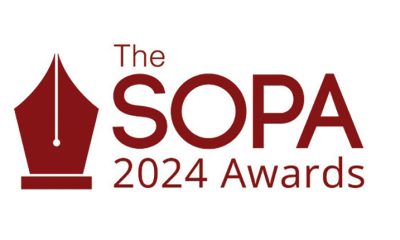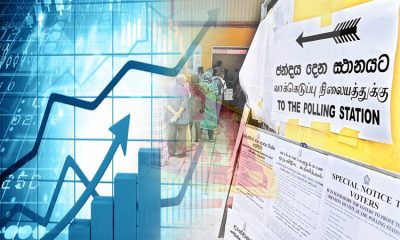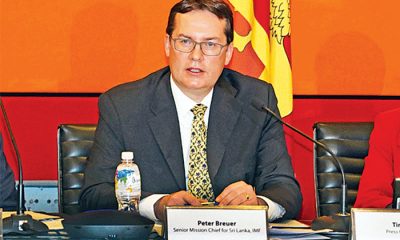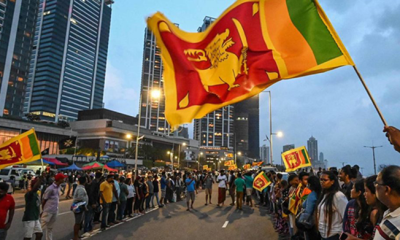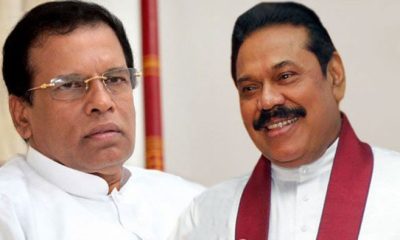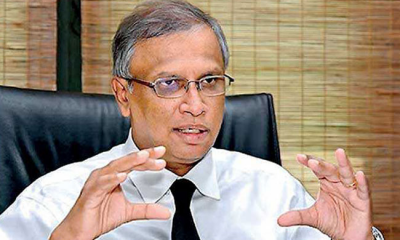Features
Sri Lanka Back as Donor Darling Ignores the BRICS
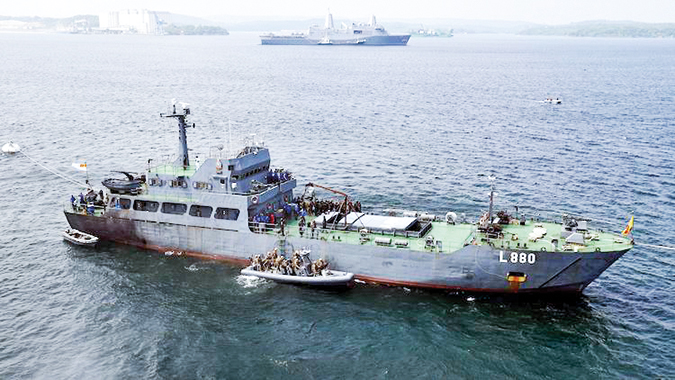
France’s Macron and the US Fish in the Indian Ocean
By Darini Rajasingham-Senanayake
COLOMBO. 23 August 2023 (IDN) —Sri Lanka continues to swing wildly between being a ‘Donor Darling’ flooded with foreign ‘aid’ and ‘advisors’ on the one hand to a ‘bankrupt’ pariah or outcast on the other.
Last year, the strategic Indian Ocean Island went from South Asia’s wealthiest nation with the best social and human development indicators to a beggar—humiliated and shunned by the ‘international community.’ This was after staging its first-ever Sovereign Default due to a Eurobond debt trap and purported lack of US dollars.
The default triggered rapid rupee depreciation and instantly beggared citizens amid a distracting trans-nationally networked, remote-controlled ‘Aragalaya’ protest operation led by social media influencers. Ironically, there was a blockade on fuel shipments to the country amid the United States Marine’s ‘Sea Vision’ training program for the Sri Lanka Navy.
Only India, the South Asian regional hegemon and good neighbor, was willing and able to help at the time. The narrative in the local and global corporate media echo chamber was that there was no fuel, food, fertilizer, medicines, or tourists to generate exorbitantly privileged and copiously printed US dollars to buy necessities. As the rupee plummeted, newly appointed US-backed President Ranil Wickremesinghe promised famine and 15-hour power cuts by promoting fear, out-migration, and brain drain from the country.
Yet, miraculously, like the Phoenix risen from the ashes a year later, Sri Lanka is back, having taken mana from heaven in the form of an International Monetary Fund (IMF) loan of just $2.9 billion to be disbursed over four years, that enabled the magical US dollars to flow again!
Last week, the island hosted the Indo-Pacific Environmental Security Forum (IPESF) at Colombo’s Shangri La Hotel, which faces South Asia’s busiest Port. More than 140 senior officers from foreign defense forces and top-level environmentalists from 28 countries in the Indo-Pacific took part at the confab overlooking Galle Face, the Aragalaya protest site. The four-day Environmental Security conference was hosted by the US Indo-Pacific Command (INDOPACOM), Sri Lanka Navy (SLN), and Sri Lanka Coast Guard (SLCG).
Although described as an ‘environmental security’ conference, the IPESF did not discuss the environmentally devastating impacts and economic costs of the global military business industrial complex, including 750 plus US military bases worldwide, their carbon emissions, and military exercises.
Environmental impacts of military exercises and war, like the Nordstream pipeline destruction or stranding and death of Pilot Whales and Dolphins due to war games as sonar systems of aircraft carriers disorient large sea creatures, were NOT on the agenda.
Climate Hypocrisy
The environmental impact of the NATO war machine and ongoing wars in Ukraine and Africa were the elephant in the room at Colombo’s Shangri-La Environmental Security Forum. Instead, trendy topics like Debt for Nature Swaps (DFNS), also called Environment, Social and Governance (ESG) bonds based on opaque carbon credit calculations, urbanization, ocean plastics, partnerships for climate resilience, data science in climate risk management, etc. were agenda items.
Two weeks before the IPESF, on July 28, French President Emmanuel Macron paid a midnight visit to Sri Lanka, where the OECD’s Club de Paris, represents Eurobond holders who were primarily responsible for the default, was involved in ongoing IMF debt restructuring negotiations and Numbers Game that are set to deepen the country’s debt bondage.
Macron, attempting to Greenwash Odious Debt and the most corrupt, opaque, and crime-ridden sector of the Western global financial system—Bond trading and derivatives—had been promoting the ‘New Global Financing Pact,’ launched last month in Paris. Based on opaque Carbon Credit calculations, the ‘Anthropocene’ climate catastrophe narrative was used to market DFNS, or Green and Blue Bonds.
Predatory bond traders, principal among them BlackRock, have debt trapped over 55 countries in the Global South during COVID-19 lockdowns. Hence, anti-corruption activists in Sri Lanka had called for an outright ban on government borrowing on private bond markets, which caused the Sovereign Default worst economic crisis, and for the country to seek membership in BRICS and the New Development Bank.
Macron, facing a rout in West Africa, was fishing in Sri Lanka’s troubled waters and promised to set up an office of the French Agency for International Development (AFD) in Colombo.
French fisheries fleets stationed in the Seychelles have been accused of over-fishing and Ocean Grabbing and impoverishing Indian Ocean littoral fisheries communities for decades. Indeed, a Brookings Institution report pointed the finger at French fleets for depriving Somalian Fishers of their livelihoods and forcing them into piracy.
Hot on the heels of departing Macron, a Japanese Government team arrived in Colombo to shower aid on the Ranil-Rajapaksa regime and restart a rapid rail project. A couple of months before Macron’s visit, CIA chief William Burns had paid a top-secret visit to the country, and the United States Ambassador at Large for Cyberspace and Digital Policy, Nathaniel C. Fick, was expected in Colombo from 17 to 23 August 2023, according to the Department of State. The Chinese were in the country earlier.
Aid Dependence and a Corruption Pandemic
Is Sri Lanka, which sits on major global trade, energy, and Submarine Data Cable routes, back again as a ‘donor darling’? The strategic island, long deemed an “unsinkable aircraft carrier in the middle of the Indian Ocean,” clearly suffers from a geostrategic ‘Resource Curse,” as well as aid-induced Dutch Disease and de-industrialization:
The Island, although rich in valuable marine resources and minerals including Graphite, Zircon, Titanium, etc., now depends on European Union GSP plus handouts to export underwear stitched by women and girls, who are working long hours in Free Trade Zone factories and servicing tourists to earn foreign exchange.
Since Independence in 1948, ‘Aid’ dependency has permeated and penetrated the government, military, business elite, policy-making, and civil society institutions, impeding industrialization and development, particularly the leveraging of valuable marine and mineral resources, including Graphite and Phosphates for fertilizer.
So, too, national law and order and investigative agencies and institutions have been penetrated and compromised due to dependency on foreign aid and experts and politicization. This has left the country vulnerable to trans-nationally networked crime, corruption, and being pumped, dumped, and de-stabilized during staged exogenous economic shocks sans proper investigations, analysis, and research.
Policies of promoting brain drain and skilled out-migration have exacerbated dependency on foreign aid, advisors, and consultants in a country already reeling from two years of COVID-19 lockdowns that had debilitated institutions and oversight mechanisms and enabled Digital Colonialism also visible in the IMF and World Bank debt numbers games.
Middle-Income Country Trap to “Make the Economy Scream”
In 2019, the country was also pumped and dumped by World Bank ‘experts’ when Sri Lanka was upgraded to an Upper Middle-Income Country (MIC). MIC status rendered the island ineligible to access concessionary loans available to less developed countries.
During two years of economically devastating COVID-19 lockdowns, successive incompetent and corrupt Ranil-Rajapaksa regimes related business cronies borrowed from private capital markets and hedge funds like BlackRock that charge predatory interest rates because of the World Bank’s MIC trap—leading to the first-ever default in 2022.
Early in its post-colonial history, Ceylon/ Sri Lanka, caught in Cold War regional refractions, was subject to various exogenous political and economic shocks; the country’s first socialist Prime Minister, who set about nationalizing ports, airports, and plantations, was assassinated, and his successor faced a coup. Insurrections in the shape of ’Jakarta Method’ operations, followed by a 30-year globally networked ‘ethnic conflict.’
Then came the mysterious 2019 Islamic State (IS)-claimed attacks at Easter Sunday on tourist hotels and churches and Chinese investments to make the ‘economy and society scream’ and encourage the obdurately independent natives to accept the Millennium Challenge Corporation (MCC), compact and the Status of Forces Agreement (SOFA), to enable US boots on the ground.
Amid the Aragalaya protest drama, default, and regime change operation last year, there were shades of President Nixon’s instructions to the Central Intelligence Agency (CIA) to make Chile’s ‘economy scream’ as a prelude to the overthrow of democratically-elected Leftist President Salvador Allende and the installation of dictator General Pinochet in 1973 during the Cold War.
As protests unfolded, the newly installed pro-Washington Ranil-Rajapaksa regime predictably promoted the myth that “there is no alternative to the IMF” and further Eurobond borrowing and debt colonialism –seemingly in preparation for an IMF Firesale of assets (prime coastal and highland lands, energy, transport, and telecom infrastructure) to benefit Eurobond traders.
Resilient in the Asian 21st Century?
However, once again, the resilient island appears to be back in business and humming along, but this time, the pumping and dumping of Sri Lanka as a new hybrid Cold War ramps up in the Indian Ocean with remote Over the Horizon (OTH), cyber and economic war operations for Full Spectrum Dominance (FSD), by a crashing superpower seems different.
During the first Cold War, there was still space for the Non-Aligned Movement (NAM) to declare the Indian Ocean as a “Zone of Peace,’ free of nuclear weapons and foreign military bases—led by the world’s first female Prime Minister and a Socialist, Sirimavo Bandaranaike.
However, since the Sovereign Default last year, Sri Lanka has not only lost Economic Independence and Policy autonomy to the Washington Twins and colonial Club de Paris, ironically on its 75th year of so-called Independence after being pumped and dumped by the World Bank into an MIC Eurobond debt trap in 2019.
Sri Lanka has lost its voice and independent thinking due to an ill-conceived policy of Brain Drain promoted by the foreign ‘Force’ backed by the Ranil-Rajapaksa government. This, in the wake of COVID-19 lockdowns and hacking of national institutions and oversight mechanisms, is promoting (Digital) neo-colonialism, also apparent in the debt restructuring Numbers Games being played by the IMF’s experts and consultants, including Lazard, Clifford, and Chance.
While Sri Lanka is being carved up for an IMF Firesale of strategic assets, by IMF’s chosen accounting and legal firms, few among the remaining local intelligentsia have thought to question the adequacy of the exorbitantly privileged and copiously printed US Dollar to measure the ‘wealth of nations’ as the world de-dollarizes. After all, the US has a deficit of $32 Trillion and counting and was downgraded by one of its own rating agencies recently.
Perhaps Sri Lanka’s resilience and the quick turnaround this time also has to do with being flanked by Asian Giants, China and India, in what has been termed the ‘Asian 21st century,’ as the BRICS emerging economies overtake the traditional G7 economic heavyweights while de-dollarizing fast.
Ironically, while France’s Macron sought an invite to the BRICS party in Johannesburg, South Africa, this week, Colombo’s Ranil Wickremesinghe has turned a blind eye to calls that Sri Lanka join the BRICS and New Development Bank.
*The writer is a social and medical anthropologist with international development and political-economic analysis expertise.
[IDN-InDepthNews]
Features
The heart-friendly health minister

by Dr Gotabhya Ranasinghe
Senior Consultant Cardiologist
National Hospital Sri Lanka
When we sought a meeting with Hon Dr. Ramesh Pathirana, Minister of Health, he graciously cleared his busy schedule to accommodate us. Renowned for his attentive listening and deep understanding, Minister Pathirana is dedicated to advancing the health sector. His openness and transparency exemplify the qualities of an exemplary politician and minister.
Dr. Palitha Mahipala, the current Health Secretary, demonstrates both commendable enthusiasm and unwavering support. This combination of attributes makes him a highly compatible colleague for the esteemed Minister of Health.
Our discussion centered on a project that has been in the works for the past 30 years, one that no other minister had managed to advance.
Minister Pathirana, however, recognized the project’s significance and its potential to revolutionize care for heart patients.
The project involves the construction of a state-of-the-art facility at the premises of the National Hospital Colombo. The project’s location within the premises of the National Hospital underscores its importance and relevance to the healthcare infrastructure of the nation.
This facility will include a cardiology building and a tertiary care center, equipped with the latest technology to handle and treat all types of heart-related conditions and surgeries.
Securing funding was a major milestone for this initiative. Minister Pathirana successfully obtained approval for a $40 billion loan from the Asian Development Bank. With the funding in place, the foundation stone is scheduled to be laid in September this year, and construction will begin in January 2025.
This project guarantees a consistent and uninterrupted supply of stents and related medications for heart patients. As a result, patients will have timely access to essential medical supplies during their treatment and recovery. By securing these critical resources, the project aims to enhance patient outcomes, minimize treatment delays, and maintain the highest standards of cardiac care.
Upon its fruition, this monumental building will serve as a beacon of hope and healing, symbolizing the unwavering dedication to improving patient outcomes and fostering a healthier society.We anticipate a future marked by significant progress and positive outcomes in Sri Lanka’s cardiovascular treatment landscape within the foreseeable timeframe.
Features
A LOVING TRIBUTE TO JESUIT FR. ALOYSIUS PIERIS ON HIS 90th BIRTHDAY

by Fr. Emmanuel Fernando, OMI
Jesuit Fr. Aloysius Pieris (affectionately called Fr. Aloy) celebrated his 90th birthday on April 9, 2024 and I, as the editor of our Oblate Journal, THE MISSIONARY OBLATE had gone to press by that time. Immediately I decided to publish an article, appreciating the untiring selfless services he continues to offer for inter-Faith dialogue, the renewal of the Catholic Church, his concern for the poor and the suffering Sri Lankan masses and to me, the present writer.
It was in 1988, when I was appointed Director of the Oblate Scholastics at Ampitiya by the then Oblate Provincial Fr. Anselm Silva, that I came to know Fr. Aloy more closely. Knowing well his expertise in matters spiritual, theological, Indological and pastoral, and with the collaborative spirit of my companion-formators, our Oblate Scholastics were sent to Tulana, the Research and Encounter Centre, Kelaniya, of which he is the Founder-Director, for ‘exposure-programmes’ on matters spiritual, biblical, theological and pastoral. Some of these dimensions according to my view and that of my companion-formators, were not available at the National Seminary, Ampitiya.
Ever since that time, our Oblate formators/ accompaniers at the Oblate Scholasticate, Ampitiya , have continued to send our Oblate Scholastics to Tulana Centre for deepening their insights and convictions regarding matters needed to serve the people in today’s context. Fr. Aloy also had tried very enthusiastically with the Oblate team headed by Frs. Oswald Firth and Clement Waidyasekara to begin a Theologate, directed by the Religious Congregations in Sri Lanka, for the contextual formation/ accompaniment of their members. It should very well be a desired goal of the Leaders / Provincials of the Religious Congregations.
Besides being a formator/accompanier at the Oblate Scholasticate, I was entrusted also with the task of editing and publishing our Oblate journal, ‘The Missionary Oblate’. To maintain the quality of the journal I continue to depend on Fr. Aloy for his thought-provoking and stimulating articles on Biblical Spirituality, Biblical Theology and Ecclesiology. I am very grateful to him for his generous assistance. Of late, his writings on renewal of the Church, initiated by Pope St. John XX111 and continued by Pope Francis through the Synodal path, published in our Oblate journal, enable our readers to focus their attention also on the needed renewal in the Catholic Church in Sri Lanka. Fr. Aloy appreciated very much the Synodal path adopted by the Jesuit Pope Francis for the renewal of the Church, rooted very much on prayerful discernment. In my Religious and presbyteral life, Fr.Aloy continues to be my spiritual animator / guide and ongoing formator / acccompanier.
Fr. Aloysius Pieris, BA Hons (Lond), LPh (SHC, India), STL (PFT, Naples), PhD (SLU/VC), ThD (Tilburg), D.Ltt (KU), has been one of the eminent Asian theologians well recognized internationally and one who has lectured and held visiting chairs in many universities both in the West and in the East. Many members of Religious Congregations from Asian countries have benefited from his lectures and guidance in the East Asian Pastoral Institute (EAPI) in Manila, Philippines. He had been a Theologian consulted by the Federation of Asian Bishops’ Conferences for many years. During his professorship at the Gregorian University in Rome, he was called to be a member of a special group of advisers on other religions consulted by Pope Paul VI.
Fr. Aloy is the author of more than 30 books and well over 500 Research Papers. Some of his books and articles have been translated and published in several countries. Among those books, one can find the following: 1) The Genesis of an Asian Theology of Liberation (An Autobiographical Excursus on the Art of Theologising in Asia, 2) An Asian Theology of Liberation, 3) Providential Timeliness of Vatican 11 (a long-overdue halt to a scandalous millennium, 4) Give Vatican 11 a chance, 5) Leadership in the Church, 6) Relishing our faith in working for justice (Themes for study and discussion), 7) A Message meant mainly, not exclusively for Jesuits (Background information necessary for helping Francis renew the Church), 8) Lent in Lanka (Reflections and Resolutions, 9) Love meets wisdom (A Christian Experience of Buddhism, 10) Fire and Water 11) God’s Reign for God’s poor, 12) Our Unhiddden Agenda (How we Jesuits work, pray and form our men). He is also the Editor of two journals, Vagdevi, Journal of Religious Reflection and Dialogue, New Series.
Fr. Aloy has a BA in Pali and Sanskrit from the University of London and a Ph.D in Buddhist Philosophy from the University of Sri Lankan, Vidyodaya Campus. On Nov. 23, 2019, he was awarded the prestigious honorary Doctorate of Literature (D.Litt) by the Chancellor of the University of Kelaniya, the Most Venerable Welamitiyawe Dharmakirthi Sri Kusala Dhamma Thera.
Fr. Aloy continues to be a promoter of Gospel values and virtues. Justice as a constitutive dimension of love and social concern for the downtrodden masses are very much noted in his life and work. He had very much appreciated the commitment of the late Fr. Joseph (Joe) Fernando, the National Director of the Social and Economic Centre (SEDEC) for the poor.
In Sri Lanka, a few religious Congregations – the Good Shepherd Sisters, the Christian Brothers, the Marist Brothers and the Oblates – have invited him to animate their members especially during their Provincial Congresses, Chapters and International Conferences. The mainline Christian Churches also have sought his advice and followed his seminars. I, for one, regret very much, that the Sri Lankan authorities of the Catholic Church –today’s Hierarchy—- have not sought Fr.
Aloy’s expertise for the renewal of the Catholic Church in Sri Lanka and thus have not benefited from the immense store of wisdom and insight that he can offer to our local Church while the Sri Lankan bishops who governed the Catholic church in the immediate aftermath of the Second Vatican Council (Edmund Fernando OMI, Anthony de Saram, Leo Nanayakkara OSB, Frank Marcus Fernando, Paul Perera,) visited him and consulted him on many matters. Among the Tamil Bishops, Bishop Rayappu Joseph was keeping close contact with him and Bishop J. Deogupillai hosted him and his team visiting him after the horrible Black July massacre of Tamils.
Features
A fairy tale, success or debacle

Sri Lanka-Singapore Free Trade Agreement
By Gomi Senadhira
senadhiragomi@gmail.com
“You might tell fairy tales, but the progress of a country cannot be achieved through such narratives. A country cannot be developed by making false promises. The country moved backward because of the electoral promises made by political parties throughout time. We have witnessed that the ultimate result of this is the country becoming bankrupt. Unfortunately, many segments of the population have not come to realize this yet.” – President Ranil Wickremesinghe, 2024 Budget speech
Any Sri Lankan would agree with the above words of President Wickremesinghe on the false promises our politicians and officials make and the fairy tales they narrate which bankrupted this country. So, to understand this, let’s look at one such fairy tale with lots of false promises; Ranil Wickremesinghe’s greatest achievement in the area of international trade and investment promotion during the Yahapalana period, Sri Lanka-Singapore Free Trade Agreement (SLSFTA).
It is appropriate and timely to do it now as Finance Minister Wickremesinghe has just presented to parliament a bill on the National Policy on Economic Transformation which includes the establishment of an Office for International Trade and the Sri Lanka Institute of Economics and International Trade.
Was SLSFTA a “Cleverly negotiated Free Trade Agreement” as stated by the (former) Minister of Development Strategies and International Trade Malik Samarawickrama during the Parliamentary Debate on the SLSFTA in July 2018, or a colossal blunder covered up with lies, false promises, and fairy tales? After SLSFTA was signed there were a number of fairy tales published on this agreement by the Ministry of Development Strategies and International, Institute of Policy Studies, and others.
However, for this article, I would like to limit my comments to the speech by Minister Samarawickrama during the Parliamentary Debate, and the two most important areas in the agreement which were covered up with lies, fairy tales, and false promises, namely: revenue loss for Sri Lanka and Investment from Singapore. On the other important area, “Waste products dumping” I do not want to comment here as I have written extensively on the issue.
1. The revenue loss
During the Parliamentary Debate in July 2018, Minister Samarawickrama stated “…. let me reiterate that this FTA with Singapore has been very cleverly negotiated by us…. The liberalisation programme under this FTA has been carefully designed to have the least impact on domestic industry and revenue collection. We have included all revenue sensitive items in the negative list of items which will not be subject to removal of tariff. Therefore, 97.8% revenue from Customs duty is protected. Our tariff liberalisation will take place over a period of 12-15 years! In fact, the revenue earned through tariffs on goods imported from Singapore last year was Rs. 35 billion.
The revenue loss for over the next 15 years due to the FTA is only Rs. 733 million– which when annualised, on average, is just Rs. 51 million. That is just 0.14% per year! So anyone who claims the Singapore FTA causes revenue loss to the Government cannot do basic arithmetic! Mr. Speaker, in conclusion, I call on my fellow members of this House – don’t mislead the public with baseless criticism that is not grounded in facts. Don’t look at petty politics and use these issues for your own political survival.”
I was surprised to read the minister’s speech because an article published in January 2018 in “The Straits Times“, based on information released by the Singaporean Negotiators stated, “…. With the FTA, tariff savings for Singapore exports are estimated to hit $10 million annually“.
As the annual tariff savings (that is the revenue loss for Sri Lanka) calculated by the Singaporean Negotiators, Singaporean $ 10 million (Sri Lankan rupees 1,200 million in 2018) was way above the rupees’ 733 million revenue loss for 15 years estimated by the Sri Lankan negotiators, it was clear to any observer that one of the parties to the agreement had not done the basic arithmetic!
Six years later, according to a report published by “The Morning” newspaper, speaking at the Committee on Public Finance (COPF) on 7th May 2024, Mr Samarawickrama’s chief trade negotiator K.J. Weerasinghehad had admitted “…. that forecasted revenue loss for the Government of Sri Lanka through the Singapore FTA is Rs. 450 million in 2023 and Rs. 1.3 billion in 2024.”
If these numbers are correct, as tariff liberalisation under the SLSFTA has just started, we will pass Rs 2 billion very soon. Then, the question is how Sri Lanka’s trade negotiators made such a colossal blunder. Didn’t they do their basic arithmetic? If they didn’t know how to do basic arithmetic they should have at least done their basic readings. For example, the headline of the article published in The Straits Times in January 2018 was “Singapore, Sri Lanka sign FTA, annual savings of $10m expected”.
Anyway, as Sri Lanka’s chief negotiator reiterated at the COPF meeting that “…. since 99% of the tariffs in Singapore have zero rates of duty, Sri Lanka has agreed on 80% tariff liberalisation over a period of 15 years while expecting Singapore investments to address the imbalance in trade,” let’s turn towards investment.
Investment from Singapore
In July 2018, speaking during the Parliamentary Debate on the FTA this is what Minister Malik Samarawickrama stated on investment from Singapore, “Already, thanks to this FTA, in just the past two-and-a-half months since the agreement came into effect we have received a proposal from Singapore for investment amounting to $ 14.8 billion in an oil refinery for export of petroleum products. In addition, we have proposals for a steel manufacturing plant for exports ($ 1 billion investment), flour milling plant ($ 50 million), sugar refinery ($ 200 million). This adds up to more than $ 16.05 billion in the pipeline on these projects alone.
And all of these projects will create thousands of more jobs for our people. In principle approval has already been granted by the BOI and the investors are awaiting the release of land the environmental approvals to commence the project.
I request the Opposition and those with vested interests to change their narrow-minded thinking and join us to develop our country. We must always look at what is best for the whole community, not just the few who may oppose. We owe it to our people to courageously take decisions that will change their lives for the better.”
According to the media report I quoted earlier, speaking at the Committee on Public Finance (COPF) Chief Negotiator Weerasinghe has admitted that Sri Lanka was not happy with overall Singapore investments that have come in the past few years in return for the trade liberalisation under the Singapore-Sri Lanka Free Trade Agreement. He has added that between 2021 and 2023 the total investment from Singapore had been around $162 million!
What happened to those projects worth $16 billion negotiated, thanks to the SLSFTA, in just the two-and-a-half months after the agreement came into effect and approved by the BOI? I do not know about the steel manufacturing plant for exports ($ 1 billion investment), flour milling plant ($ 50 million) and sugar refinery ($ 200 million).
However, story of the multibillion-dollar investment in the Petroleum Refinery unfolded in a manner that would qualify it as the best fairy tale with false promises presented by our politicians and the officials, prior to 2019 elections.
Though many Sri Lankans got to know, through the media which repeatedly highlighted a plethora of issues surrounding the project and the questionable credentials of the Singaporean investor, the construction work on the Mirrijiwela Oil Refinery along with the cement factory began on the24th of March 2019 with a bang and Minister Ranil Wickremesinghe and his ministers along with the foreign and local dignitaries laid the foundation stones.
That was few months before the 2019 Presidential elections. Inaugurating the construction work Prime Minister Ranil Wickremesinghe said the projects will create thousands of job opportunities in the area and surrounding districts.
The oil refinery, which was to be built over 200 acres of land, with the capacity to refine 200,000 barrels of crude oil per day, was to generate US$7 billion of exports and create 1,500 direct and 3,000 indirect jobs. The construction of the refinery was to be completed in 44 months. Four years later, in August 2023 the Cabinet of Ministers approved the proposal presented by President Ranil Wickremesinghe to cancel the agreement with the investors of the refinery as the project has not been implemented! Can they explain to the country how much money was wasted to produce that fairy tale?
It is obvious that the President, ministers, and officials had made huge blunders and had deliberately misled the public and the parliament on the revenue loss and potential investment from SLSFTA with fairy tales and false promises.
As the president himself said, a country cannot be developed by making false promises or with fairy tales and these false promises and fairy tales had bankrupted the country. “Unfortunately, many segments of the population have not come to realize this yet”.
(The writer, a specialist and an activist on trade and development issues . )


